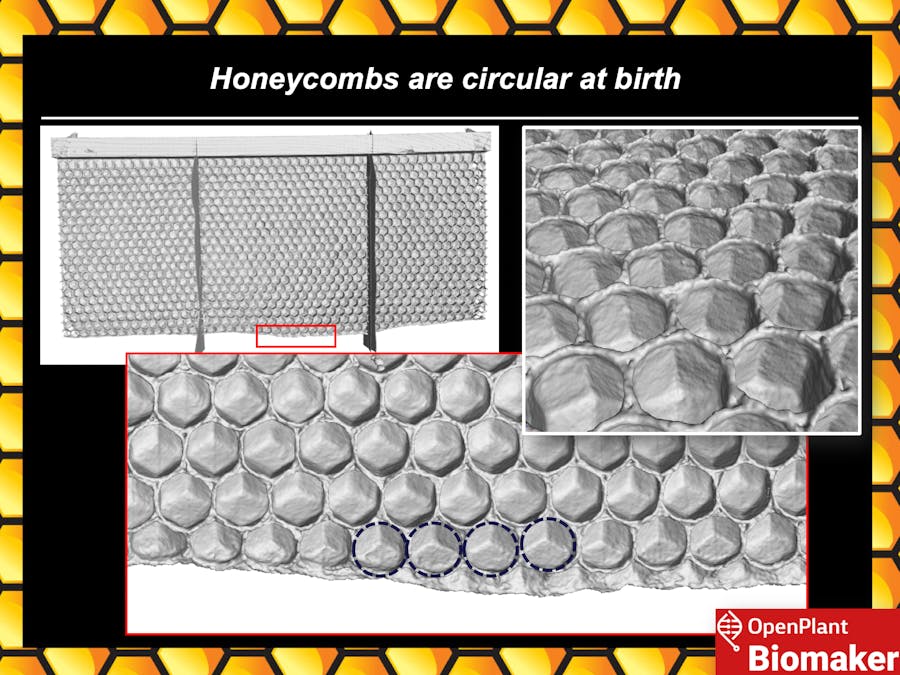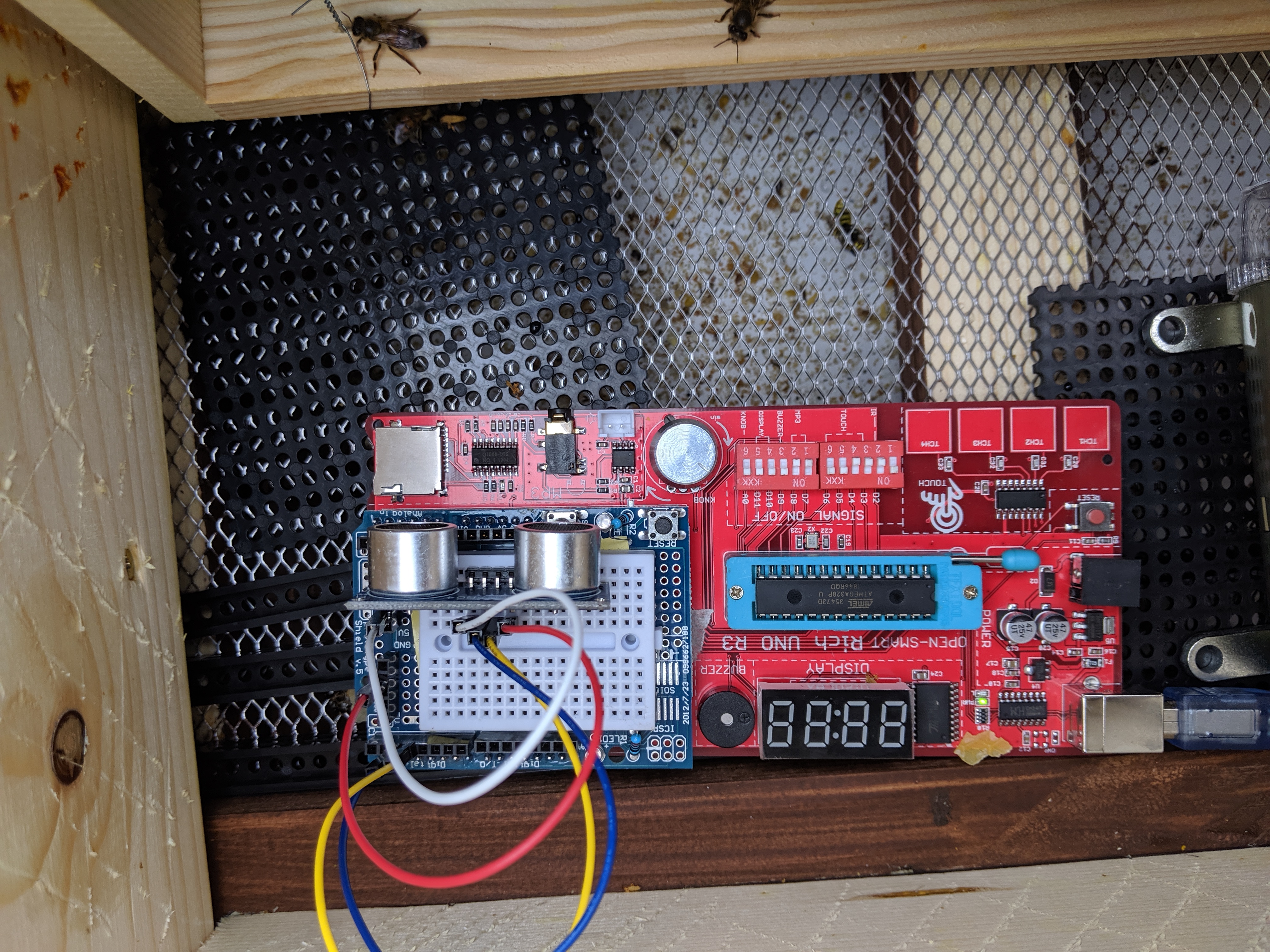- What is Honeycomb Conjecture?
The honeycomb conjecture (HC) states that a regular hexagonal grid is the best way to divide a surface into regions of equal area with the least total perimeter, proven in 1999 by Thomas C. Hales.
The honeycomb conjecture answers, 'Why bees build hexagonal honeycombs?' To minimise the requirement of wax.
- What is our project about?
Our project is aimed at understanding the process by which bees build their hexagonal honeycombs. Do bees really understand the HC, or is it all fortuitous?
- What is our approch, methodology?
We use X-ray CT scans to obtain 3D tomograms of a growing honeycomb at various stages. A swarm of bees in a fresh bee-hive is allowed to breed in empty nucs (shelves). The hive is fitted with a microscopic camera focussed on individual cells to closely monitor the building process. Ultrasonic position sensor connected through the Arduino Uno board continuously reads the height of the cells. Scans are taken at every ~2 mm of cell growth (in height), when the buzzer rings! It roughly takes 24 hrs for every successive growth step. The temperature in the cells are monitored as well.
- Observations
Data is post-processed in VGStudio Max 2.2 (for 3D tomography), Matlab and imageJ. Results are being compiled. Undertaking more experiments.
- Key Findings
Our project provides experimental evidence (in-situ tomographic visualisation) that honeycombs are born as circles or cylinders. They grow in space and form prismatic cells. Bees build their cylindrical cells in closely packed ABAB arrangement which transform into a more efficient shape, the hexagon. The exact mechanism by which the transformation occurs is yet to be explored.
Results are prepared for a peer reviewed journal submission.
Future Plans
The best way we can visualise the honeycomb conjecture, and understand the underlying mechanism by which circles transform into hexagons is to replicate the process artificially. A collaboration is initiated with Virginia Tech. U.S. to build a 3D printer and mimic the bees in building honeycombs.
We are excited about this, are you ? Drop in your comments and suggestions.







_ztBMuBhMHo.jpg?auto=compress%2Cformat&w=48&h=48&fit=fill&bg=ffffff)











Comments
Please log in or sign up to comment.